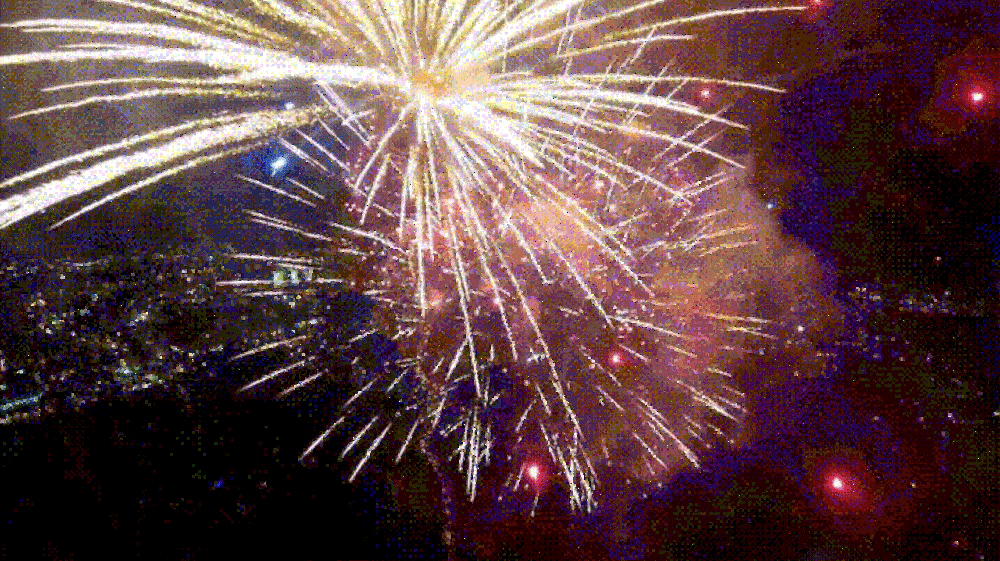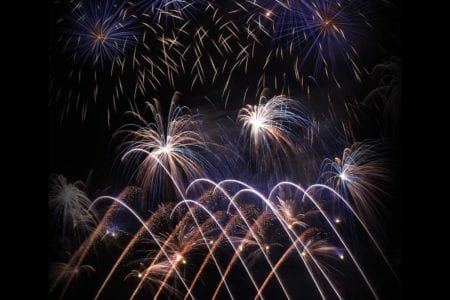Nothing quite compares to the enchanting booms and twinkling lights of a Fourth of July fireworks show. But behind the scenes, these extravagant displays require a team of creative technicians and days, if not weeks, of planning to create a few magical moments.
Fireworks production company Melrose Pyrotechnics specializes in large displays called pyromusicals — an industry term for fireworks shows that are choreographed to music. Soundtrack producer Jon Gesse travels around the world creating the musical soundtracks for Melrose’s fireworks displays.
Field Service Digital caught up with Gesse to find out what it takes to design and produce such explosive performances.
What type of initial work goes into producing a large fireworks display?
Jon Gesse: The first part of the process is the design of the soundtrack, which can take anywhere from several hours to several weeks depending on the project. Once the show is completely designed, it will be downloaded into a special type of computer that we use to fire the show.
Throughout the year, as we receive our fireworks, we test and film every type of pyrotechnic effect that we use. All of this information is cataloged in our computer system and is invaluable when designing a display.
How many technicians do these displays require, and what are their responsibilities?
JG: Some of our larger displays require upwards of 20 pyrotechnicians to set up over several days. The lead technician is responsible for overseeing everything from the time the truck arrives on site until everything is cleaned up after the display.
A lot of responsibilities come with working on a fireworks crew. It’s definitely manual labor, as there is a lot of heavy equipment involved. Pyrotechnicians are truck drivers, carpenters, electricians, architects and artists all in one.
What type of equipment do you use for a show?
JG: Professional fireworks displays typically consist of many aerial shells, which are fired out of tubes called mortars. Mortars are held in devices called racks, which are constructed out of metal or wood. Fireworks are loaded into the mortars and wired into modules. The modules consist of 16-32 ‘cues’ or ‘addresses’ into which fireworks are wired.
Pyrotechnicians are truck drivers, carpenters, electricians, architects and artists all in one.
Each shell has its own address, so the firing computer knows that it is plugged in, and has specific instructions for when to fire it during the display. The modules are all connected either by cable or wirelessly to the firing computer. When the technician starts the display, the computer fires the show according to pre-programmed instructions.
What’s the most important thing to keep in mind during a show?
JG: The most important is safety — making sure everything is going according to plan, and that all of your equipment is functioning properly. We always have crew watching the racks during displays to be aware of things such as a shell not lighting or a low shell breaking.
What are some of the most memorable displays Melrose Pyrotechnics has put on?
JG: The most memorable would be our first display at L’International des Feux Loto-Quebec in 2006. It was our first time participating in an international competition and is one of the most renowned fireworks events in the world. Representing the USA, we performed a 30-minute pyromusical of Broadway shows and took first place in the competition.
When we get invited to perform displays in Japan, Korea, China and Vietnam and work among the best and most creative fireworks display companies in the world, it is always exciting, challenging and unbelievably gratifying.
Every display is an adventure and the reward is always worth the effort when you hear the roar of the crowd at the end of the show.
Images courtesy of Melrose Pyrotechnics




Share this: